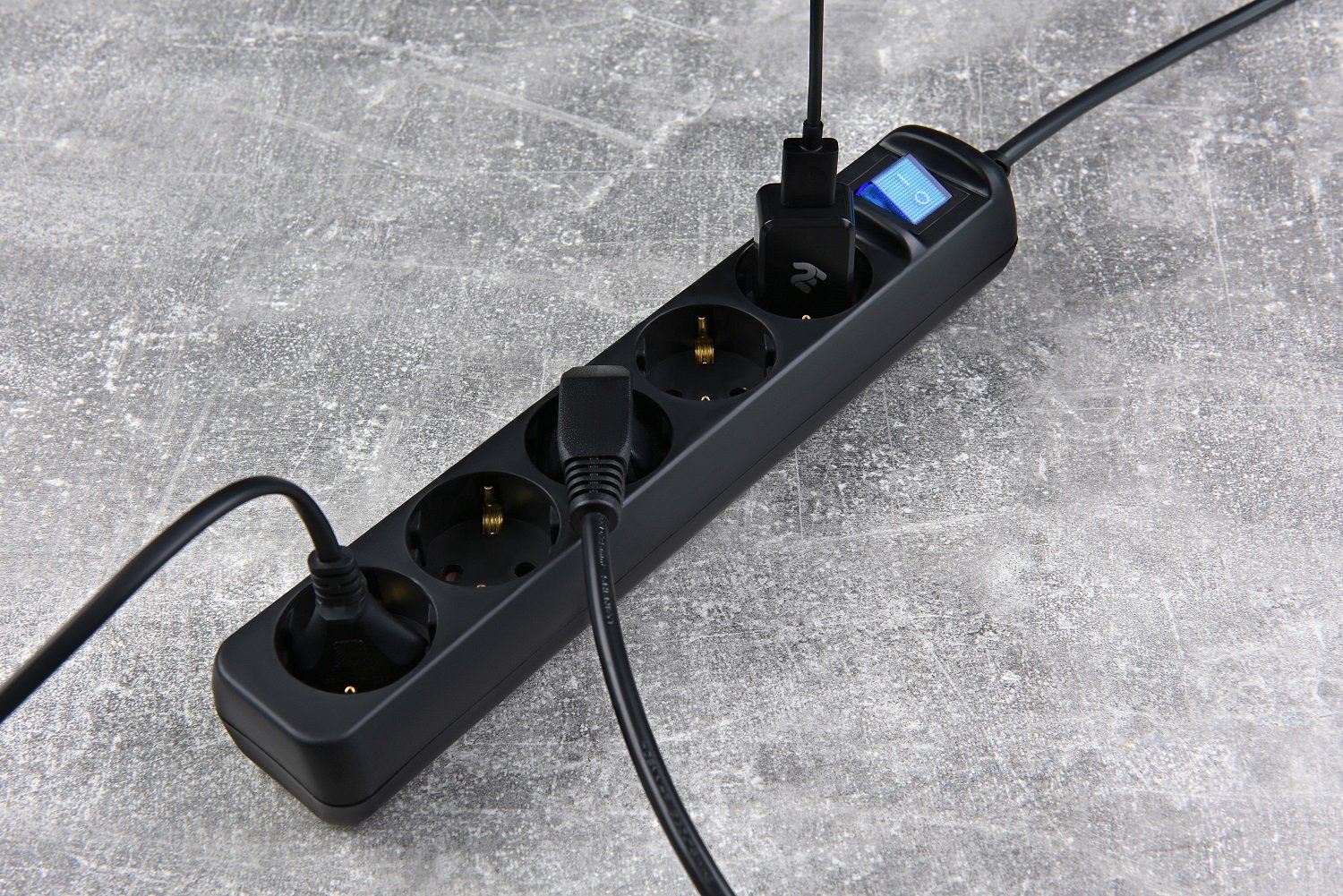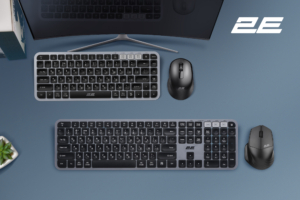2E extensions with important functionality

War is an uncompromising and strict regulator of the demand for the quality of goods. Most buyers no longer consider the cheapest product, but choose a reliable one. This break in consciousness is positive, but it is a pity that at such a price.
Network extenders 2E: how to choose the right one and what characteristics to pay attention to when buying.
The main characteristics of the extension cord: voltage, current, power
Most extension cords used in everyday life are household and designed for 220-250 V (often 230 V), 50 Hz and 16 A. These are the characteristics that ordinary household sockets have. When buying, you should pay attention to the back of the device, where the indicators for which the extension cord is designed will be indicated. You should not buy extension cords if they do not have such information, it can be life threatening.
Conductor material
Extension cords are designed for 10 A and 16 A, this indicator depends on the cross-section of the core and the composition of the conductor. Extension cords with copper cores (Cu – cuprum) and copper-aluminum alloy (CuA) are most common. The last option makes the extension cord cheaper, but lowers the quality. Extension cords, the conductor of which is not made of 100% copper, heat up under small loads, because the declared indicators characteristic of a section of 1 mm2 do not meet the needs, and if the load is critical, it can burn out and cause a fire. You can check the quality of the conductor by cleaning and setting the wire on fire: copper will heat up, but not burn out, the alloy of copper and aluminum will burn and fall off. Each batch of 2E extension cords is tested: the conductor used in the extension cords is 100% copper.
All 2E network extension cords have this information marked on them. During production, tests are conducted to confirm the declared characteristics.
Info sticker and labeling
The info sticker shows the maximum safe values for constant load. This means that a 2,500 W boiler or a 2,500 W air conditioner should not be plugged into an extension cord designed for 2,300 W. Also, according to safety regulations, it is forbidden to connect several powerful devices to one extension cord (specified in the instructions). Each 2E extension cord comes with an instruction manual.
Another important feature is marking. The type and cross-section of the core must be indicated on the cable. If the cable is not marked, this indicates that the product is of low quality, so its use can pose a potential threat to the life and property of the user.
Not all brands can boast of full product characteristics, these aspects are often kept silent. The manufacturer, who has nothing to hide, will indicate the composition of the conductor, the cross-section of the core, and the maximum load for which the extension cord is designed. If the cross-section, material of the conductor, information on the maximum constant load is not indicated on the packaging, such products should be bypassed.
Wire cross section
The material has been dealt with, but what about the cross-section? 10 A extension cords are equipped with a cable with a core cross-section of 0.75-1 mm2. They can be used to power low-power devices: charging a smartphone or tablet, connecting office equipment, a desk lamp, a PC. They are more affordable due to the small cross-section of the core, and therefore the small amount of conductor material used to make the cable. The smallest cross-section of the 2E extension cord models is 1 mm2, 100% copper.
In 2022, experimentally, following the experience of A-brands, the 2E line of extension cords was expanded with models with a 1.5-meter cable for cases when additional ¬sockets are needed, rather than a several-meter extension. This length is enough to connect the extension cord to the socket under the table and avoid overpaying for the length of the cable, which will get tangled under your feet and get in the way.
The gold standard of extension cords
What is the difference between extension cables with two or three cores? Everything is very simple: a cable with grounding (three cores) and two cores without grounding. Given the fact that more conductors are used for a three-core cable, extension cords with grounding are the most expensive. Almost all three-wire extension cords have a power button. This is convenient if you need to turn off all the devices without pulling out all the plugs from the outlet.
Extension cords with a cross-section of 1.5 mm2 and three cores (with grounding) are considered the safest, generally accepted “golden” standard for household use. It is these characteristics that provide a current of 16 A and a nominal load of 3,600 W. Having purchased such an extension cord, you will not have to buy another one in case you need to connect a heater, washing machine, or air conditioner. The cost of such an extension cord is higher than the 10 A model, but this difference is a price for reliability. The 2E range includes extension cords with a cross-section of 1.5 mm2 in various lengths and colors.
Body material
The housing of the extension socket block must be exclusively made of fire-resistant plastic so that it does not catch fire in the event of a short circuit. The housings of all 2E extension cords are made of this material.
It is worth understanding the characteristics of extension cords only once and for all, this will help prevent the purchase of low-quality goods, save money and save you from disaster. A quality product will not cause unexpected surprises. When buying 2E extension cords, be sure that you are choosing a quality product.
2E Plus line of extension cords
If you’re looking for something a bit more sophisticated, even with wall mounts, the 2E Plus line of extension cords is the way to go. The power button has a neutral blue backlight. Extenders of this line with an optimal cable length of 3 meters differ only in the number of sockets – 3, 4 and 5.


